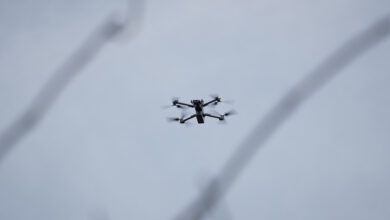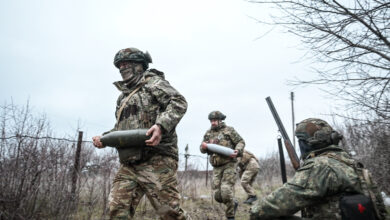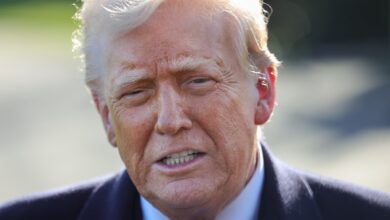
For most of the late 1990s and early 2000s, Chinese foreign policy amounted to Deng Xiaoping’s “hide capabilities and bide time” stratagem. While there was the occasional flare-up around the Taiwan Strait and modest military modernizations, most of Beijing’s efforts focused on building a large reserve of soft power.
In 1997, East and Southeast Asia suffered from a financial crisis. Assisting neighboring Asian nations with relief packages, China seized the opportunity for humble leadership. After demonstrating that they could act as a responsible neighbor, China was inducted into the World Trade Organization.
In 2008, Beijing hosted the Summer Olympics. With their elaborate choreography and immaculate Olympic facilities, modern China made their unofficial debut to the world.
The turning point for China was the West’s 2008 financial crisis. While affecting most of the world, the crisis barely made an appearance in China. The Chinese Communist Party drastically misinterpreted events. China translated this as the fall of American hegemony and seized the opportunity to assert itself.
China was concluding its era of hide-and-bide.
China’s New Path
The year 2009-2010 marked China’s first year of assertiveness. It was sparked by the West’s 2008 financial crisis and inaugurated by then-President Hu Jintao’s assessment for China to “Actively Accomplish Something.” China embarked on a new path.
When Japanese authorities arrested a drunken Chinese fisherman for drifting into disputed waters, China threatened Japan with diplomatic and economic retaliation. When North Korea sunk a South Korean submarine, killing 46 sailors, China blocked a UN Security Council resolution condemning the attack. China arrested Australian businessmen in retaliation for Canberra, blocking a merger between Chinese and Australian energy companies. Finally, China imprisoned the popular human rights activist and Nobel Peace Prize recipient Liu Xiaobo.
While this 18 months span initiated China’s new foreign policy strategy, Chinese leaders pulled back on some of the more provocative measures. After realizing that the United States was still the predominant power, they went to reassure the world that they could remain a responsible stakeholder.
President Xi Jinping went to lengths to reassure the international community that they were promoters of globalization and even embraced President Barack Obama’s climate change initiatives. Even despite the Donald Trump administration’s hostility toward them, China continued to make strategic inroads in Europe and the developing world.

While China sought to reassure the world after its first year of assertiveness, there is no question that China began to invest more resources into its hard power capabilities. This shift has been indicated by massive investments in military modernization, determined diplomatic and economic outreach to developing countries, and an increasingly aggressive tone.
Despite this, China and Xi Jinping always maintained the façade of a “peaceful rise.” However, 2020 destroys China’s “peaceful rise” strategy and stands out as uniquely assertive. If policymakers are to be efficacious in dealing with China, they need to recognize 2020 as another turning point in Chinese foreign policy, as a new “year of assertiveness.”
China’s new year of assertiveness has taken several forms: safeguarding the Chinese Communist Party from perceived internal security threats, provocative military actions in disputed territories, and unnecessary inflammatory language from the diplomatic core.
Perceived Internal Security Threats
The Chinese Communist Party (CCP) has used the COVID-19 crisis to crack down on internal dissident groups. One of these crackdowns occurs in the rural province of Xinjiang, which is home to over 11 million Uyghurs. Uyghurs, an ethnic and religious minority within China, have had constant tensions with Beijing.
The US State Department claims that over one million Uyghurs are in forced labor camps. Earlier this year, a major leak of classified Chinese documents showed the extent of the crackdown. They revealed that Muslim minorities were undergoing political indoctrination and physical abuse.
Xinjiang province has been a source of insecurity for Beijing, and their new aggressive posture stems from that paranoia. Beijing’s new confidence in their abilities has resulted in the oppression of the Uyghur minority.
China is abusing rights in Xinjiang on a massive scale:
13 million people subjected to forced political indoctrination & mass surveillance;
Est. 1 million people in "political education" camps;
1 million+ officials & police officers monitor people https://t.co/4tlRg8rhIP pic.twitter.com/EDh0GveOQg
— Human Rights Watch (@hrw) September 10, 2018
Additionally, China’s National People’s Congress approved the new Hong Kong national security law. The new law came after months of pro-democracy protests in Hong Kong’s streets. The demonstrations were always a source of instability for Beijing, often being a weathervane of criticism towards the CCP.
The new law is purposefully vague, giving Beijing more latitude to strike against dissidents in Hong Kong. Beijing has already established a new policing office in the financial hub and has carried out several arrests under the new law. The passage and implementation of this new ordinance effectively ends the “one country, two systems” arrangement made in the 1990s.
With the formation of concentration camps in Xinjiang and the abolition of Hong Kong’s autonomy agreement, China’s aggressive measures to secure Communist Party rule pales compared to the suppression carried out during China’s first year of assertiveness.
CCP’s Provocative Military Actions
The second form of overt assertiveness has been provocative military actions taken by the CCP, specifically in the South China Sea and in disputed border territory with India in the Himalayas.
Buttressed by the world’s largest navy, China is becoming more aggressive in defending its claim that the South China Sea is Chinese territory. This year, China declared two new “districts” in the South China Sea, which encompasses disputed territory.
Additionally, Chinese vessels have been spotted in Indonesian waters, and Vietnam claims that China is responsible for the ramming and sinking of a Vietnamese ship. All these actions are meant to assert China’s power in defense of its territorial ambitions.

In eastern China, tensions are rising between China and India after a dramatic clash between military forces earlier this year. While the Galwan Valley has been a perennial source of uncertainty, the two countries were always able to resolve their disputes before military troops clashed. In the new year of assertiveness, however, that dialogue is mainly absent.
As 2020 continues, tensions only continue to heighten. A recent New York Times report illustrates that the Chinese government is expanding military capabilities in India’s remote Ladakh region, which leaves India’s military hard-pressed to respond. These dramatic actions are part of China’s year-long trend of asserting itself, abandoning any notion of a peaceful rise.
China’s ‘Wolf Warriors’
The third form of China’s new nature is its unabashed pugnacity within the diplomatic core. Chinese diplomats are the first line of defense in defending the image of the CCP. The CCP always characterized its rise as a peaceful one, meant to be compatible with the current international order.
In 2020, China’s diplomats have embraced a resurgent fierceness, reminiscent of the Maoist era. These diplomats have been termed China’s “wolf warriors.” These wolf warriors are products of China’s new ascendant nationalism and a physical representation of what Xi has called the “fighting spirit.”
Their attacks are tainted with hubris, combativeness, and indignation. One wolf warrior claimed that the US military planted COVID-19 in China. When the United Kingdom announced it was withdrawing its deal with Chinese mega-firm Huawei, China’s ambassador to London warned that the UK would “pay the price” for this action.
China still maintains a large reserve of traditional diplomats, but the rise of China’s wolf warriors is emblematic of the country’s behavior this year.
Utilizing Hard Power
If China’s first year of assertiveness in 2009 and 2010 inaugurated China’s foreign policy shift from soft power to hard power, China’s second year of assertiveness demonstrates how they plan to utilize that hard power.
Beijing’s number one policy goal is to preserve the Communist Party rule, which stems from a deep paranoia about the loyalty of their citizens and the motives of their neighbors. Confident in their new capabilities, Xi Jinping has gone to great lengths to oppress dissent, challenge neighbors, and declare their ascendancy.
Policymakers in the United States, Europe, and Asia need to understand that 2020 is another watershed moment for China’s foreign policy. The era of hide-and-bide is gone; the reign of the wolf-warriors is coming.
 Connor Fiddler is a graduate student at George Washington University’s Elliott School of International Affairs, pursuing a Master of Arts in Security Policy Studies. His academic research work has focused primarily on US national security and Asia-Pacific security issues.
Connor Fiddler is a graduate student at George Washington University’s Elliott School of International Affairs, pursuing a Master of Arts in Security Policy Studies. His academic research work has focused primarily on US national security and Asia-Pacific security issues.
Disclaimer: The views and opinions expressed here are those of the author and do not necessarily reflect the editorial position of The Defense Post.
The Defense Post aims to publish a wide range of high-quality opinion and analysis from a diverse array of people – do you want to send us yours? Click here to submit an op-ed.











